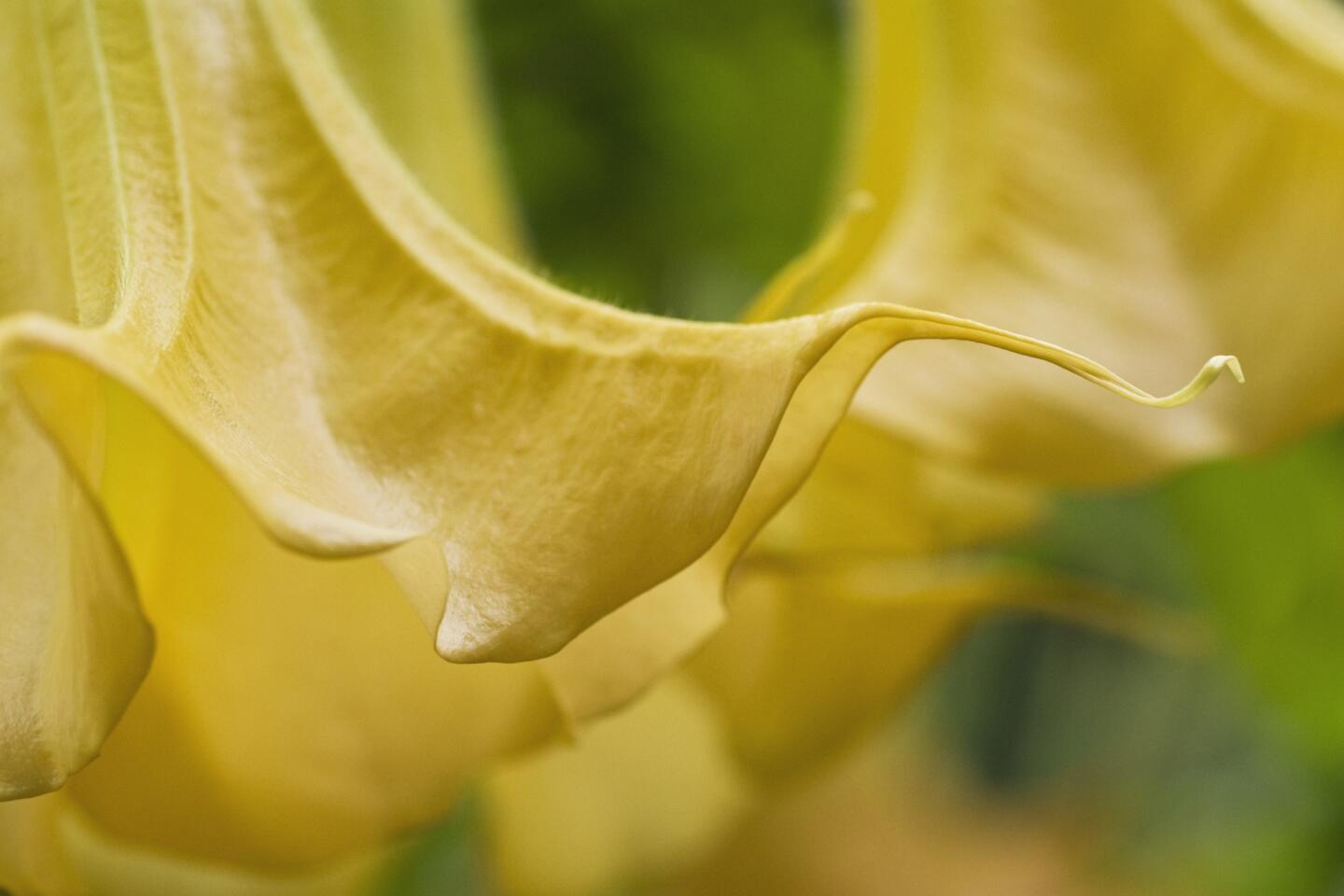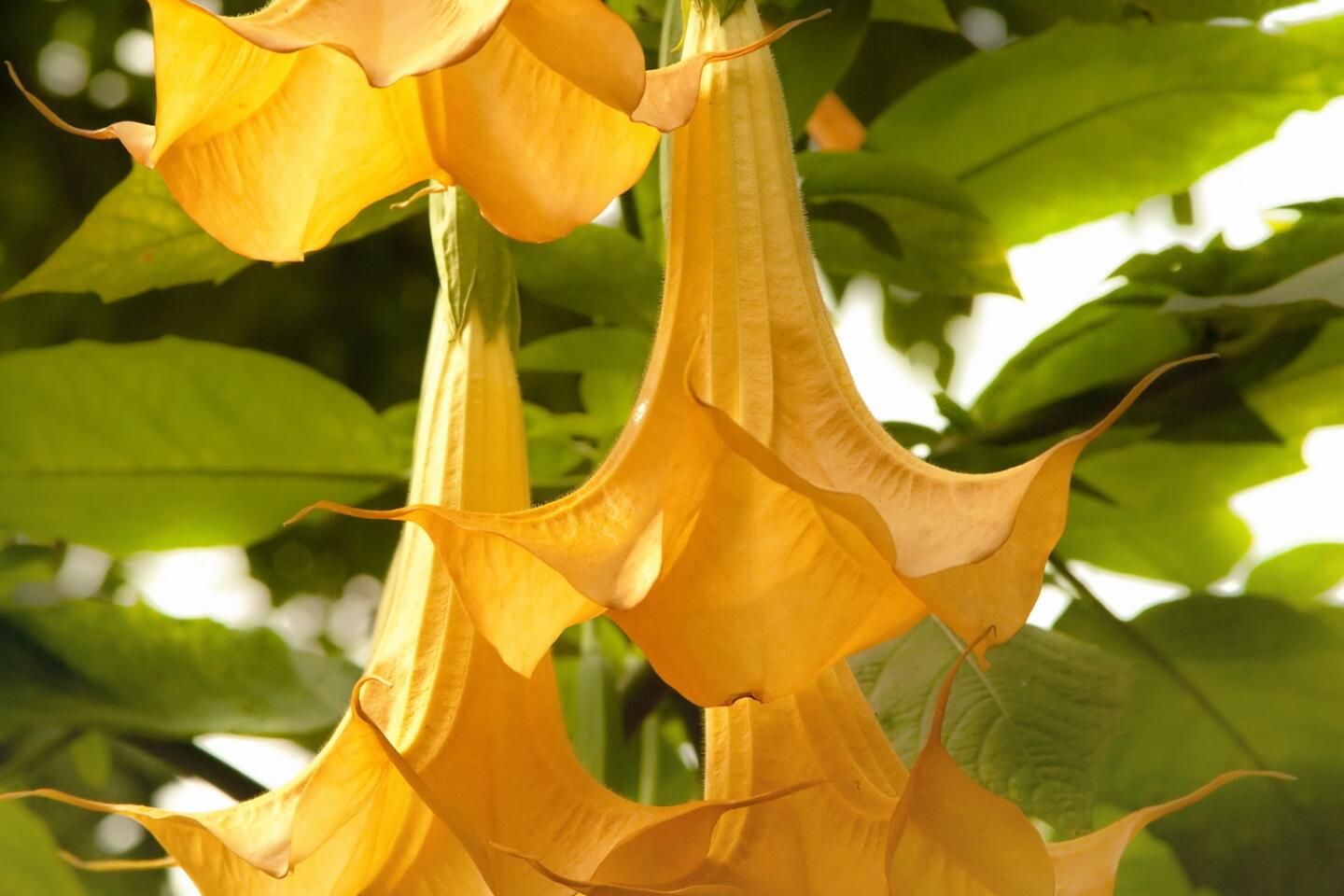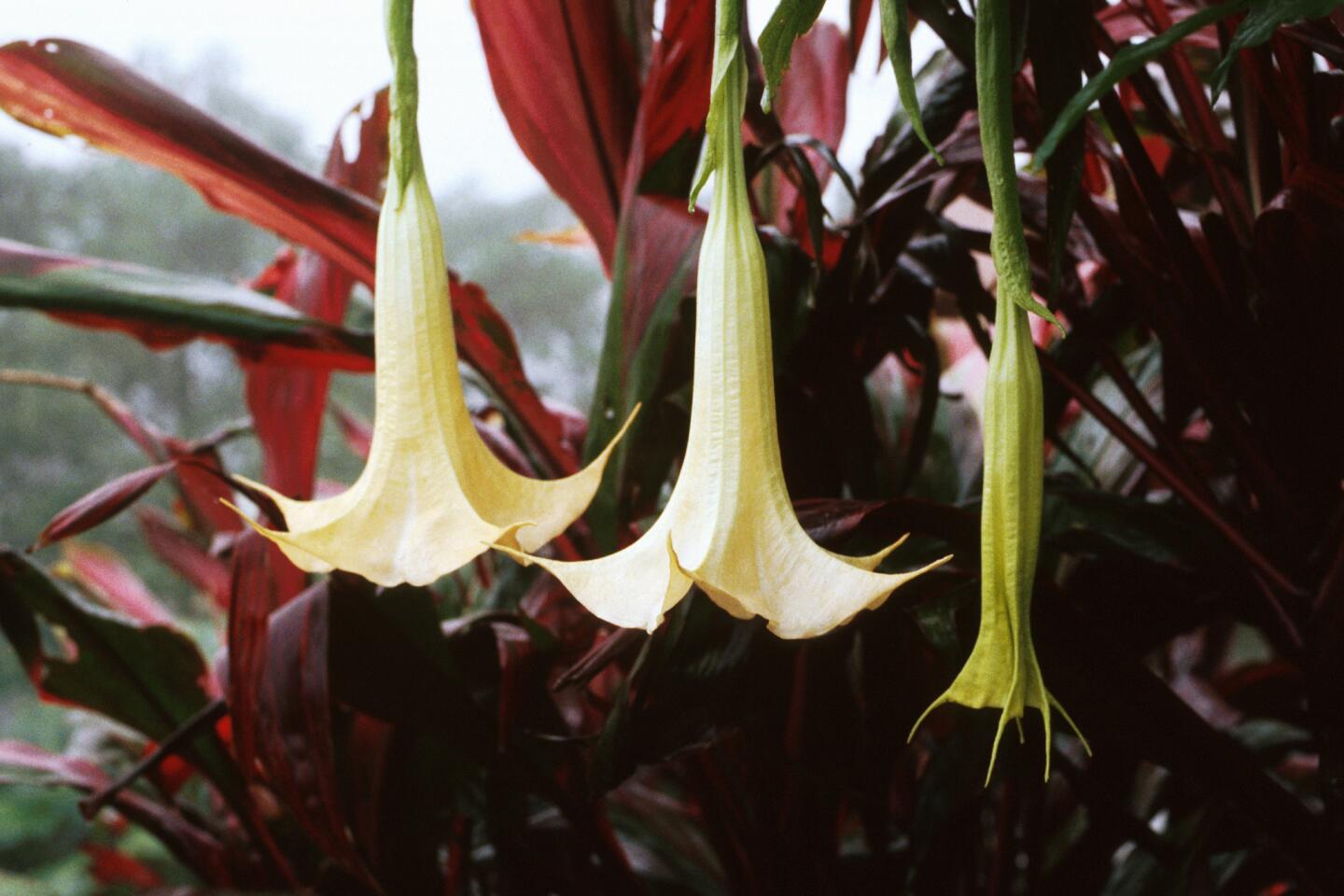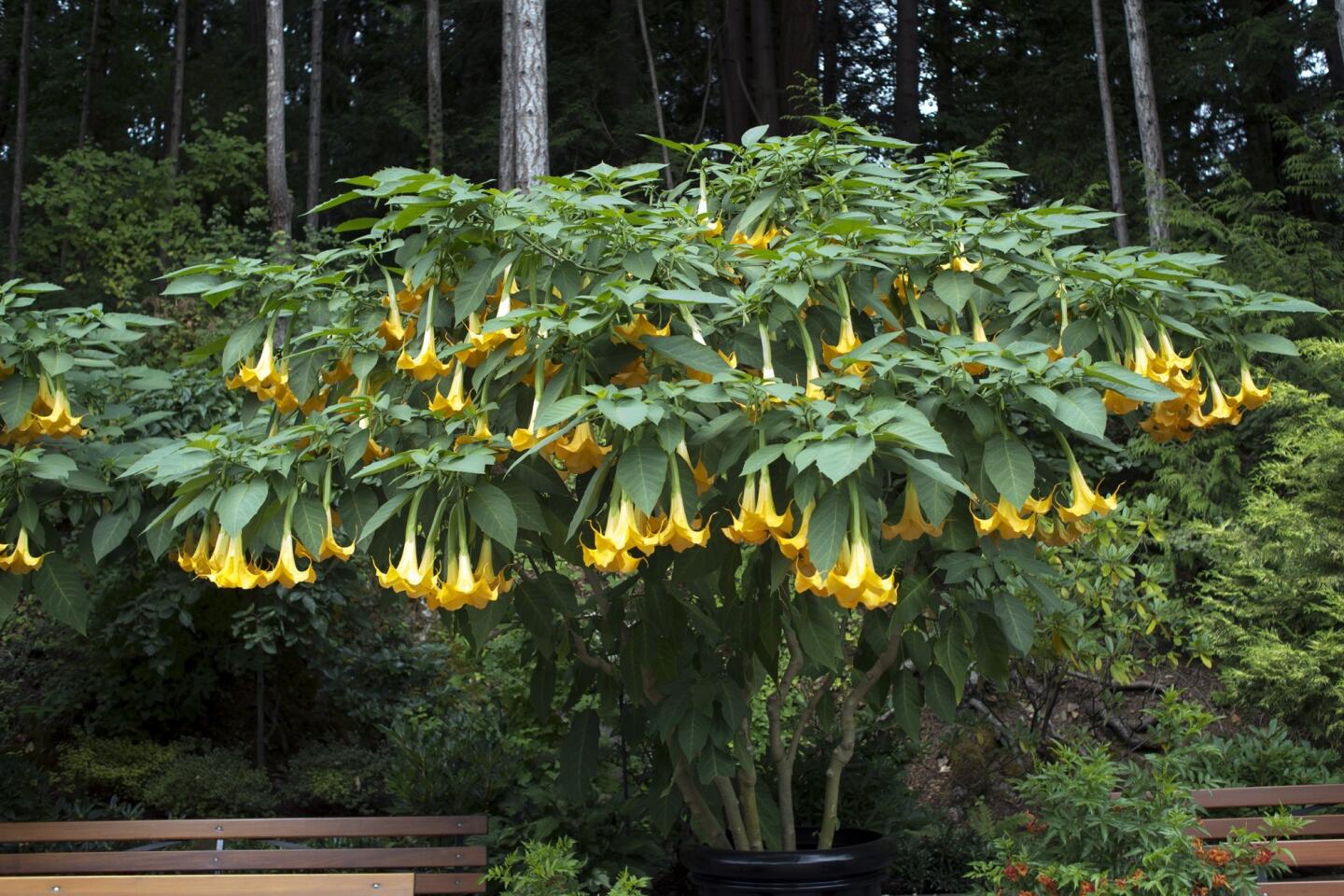What a showoff: Ghostly Brugmansia delivers spectacular garden blooms
- Share via
Every garden needs a showoff — a plant so ostentatious that it demands to be stared at and discussed. Such a diva can be found in Brugmansia, commonly called angel’s trumpet.
Native to South America, the tree-like shrub is known for its nearly foot-long bell-shaped flowers that blossom year-round. The blast of blooms can top 100 in number –– a lavish cascade of yellow, white or pink-peach, the most common Brugmansia colors found in Southern California.
At night the pendulous blooms release an ambrosial scent. After the flowers knock you out with wonder, the ethereal evening fragrance works like a restorative.
This is nature at its exotic best.
Brugmansia is easy to grow. Just snap off a jointed foot-long branch and stick it in the ground, burying a node or two. Within six months, vigorous growth kicks in. Once established, a plant can grow 6 to 8 feet during the summer, topping out at 14 feet or higher.
Brugmansia requires moderate watering of about once a week, and more in warmer weather. It favors full to partial sun.
“We have a variety called Shredded White, flowers that hang down like little ghosts –– it’s pretty neat,” said Frank McDonough, a botanist with the Los Angeles County Arboretum and Botanic Garden in Arcadia.
A member of the Solanaceae or nightshade family, Brugmansia is closely related to Datura (moonflower, jimsonweed), a ground-hugging plant with similar blooms found throughout Griffith Park. Often snowy white and edged with a faint violet, Datura blooms point in the opposite direction –– skyward.
Brugmansia has its downsides.
- All parts of the plant can be toxic if ingested –– except, alas, for such pests as cabbage worms, spider mites, aphids and whiteflies. (The plant is sometimes used as a hallucinogen for spiritual ceremonies throughout South America.)
- Spider mites mass on the underside of leaves, turning them speckled and yellow. They also coat new growth with a web-like substance. Rather than insecticides, forceful sprays of water directed upward are best. The trick is to break the insect’s life cycle; the process can take up to a month of several sprays each week. Turn leaves over to spot cabbage worms that decimate leaves with voracious munching. Simply pick them off. Insecticidal soaps can work on whiteflies. Aphids can be forced off with water sprays.
- Brugmansia tends to grow leggy as leaves drop off. The simple solution: Snap off all that skeletal growth; it’s also a speedy way to banish pests.
“You can whack it back to a foot tall, the whole thing, and it’ll come back like gangbusters,” said McDonough. “The more you ignore them, the better they do. Some people care for them so much they kill them.”











